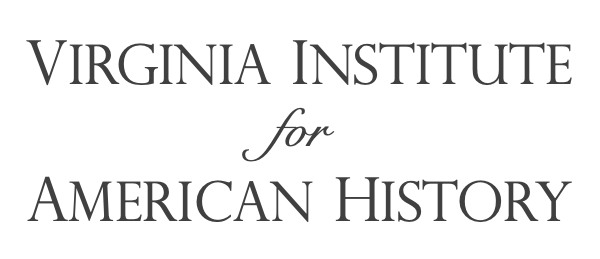By: Paul Aron
On June 7, 1776, Richard Henry Lee, following
the instructions of the Virginia Convention, introduced a resolution at the
Continental Congress in Philadelphia “that these United Colonies are, and of
right ought to be, free and independent States, that they are absolved from all
allegiance to the British Crown, and that all political connection between them
and the State of Great Britain is, and ought to be, totally dissolved.” The Continental Congress adopted Lee’s
resolution and then appointed a committee of five – John Adams, Benjamin
Franklin, Roger Sherman, Thomas Jefferson, and Robert Livingston – to turn the
resolution into a declaration of independence. Adams took charge and promptly assigned Jefferson to write a
draft.
Jefferson did not want to do it. He watched Lee depart for home and
longed to follow him. He was
convinced that what was going on in Williamsburg, where the Convention’s
delegates were drafting a constitution for the newly independent commonwealth,
mattered more than what was going on in Philadelphia. Jefferson had even written a draft constitution that he
hoped the Convention would adopt.
Jefferson suggested Adams should draft the
Declaration himself. Adams
declined, giving several reasons:
One. That he was a Virginian and I a Massachusettensian. Two. That he was a southern man and I a northern one. Three. That I had been so obnoxious for my early and constant zeal
in promoting the measure, that any draft of mine, would undergo a more severe
scrutiny and criticism in Congress, than one of his composition. Fourthly and lastly that would be
reason enough if there were no other, I had a great opinion of the elegance of
his pen and none at all of my own.
Adams' arguments, Jefferson had to admit, made
sense. Jefferson went to work and,
a day or two later, produced a draft of what would become the Declaration of
Independence.
How he managed to write, in a matter of a day
or two, the words that more than any others made America has been the subject
of much debate. Part of the answer
is he didn’t start from scratch.
He had with him in Philadelphia, and he clearly drew from, his own
previous writings, including his 1774 Summary
View of the Rights of British America, his 1775 “Declaration . . . Setting
forth the Causes and Necessity of their taking up Arms,” and his draft of a constitution
for Virginia. He also had others’
recent works at hand, most notably a draft of Virginia’s Declaration of Rights,
which was written by George Mason and adopted with amendments in the Virginia
Convention. Mason’s declaration
opened by stating: “That all men hare born equally free and independent, and
have certain inherent natural rights, of which they cannot, by any compact,
deprive or divest their posterity; among which are the enjoyment of life and
liberty, with the means of acquiring and possessing property, and pursuing and
obtaining happiness and safety.”
Jefferson’s most famous words were clearly derived from Mason’s.
Jefferson also drew from works that he did not
have at his side in Philadelphia.
He was familiar with the writings of seventeenth-century English
writers, including John Milton, Algernon Sidney, and above all, John Locke, who
set forth a doctrine of natural rights in his Second Treatise of Government. He may also have drawn from Scottish philosophers,
especially Francis Hutcheson.
Jefferson submitted his draft to Adams and
Franklin, who made a few changes, among them that the rights Jefferson had
declared to be “sacred and undeniable” were instead “self-evident.” The committee then sent the document on
to the Congress, which made a total of eighty-six changes. Most involved cutting (about a quarter
of Jefferson’s text was eliminated), but the Congress also played with
Jefferson’s language, for example changing “inherent and inalienable rights” to
“certain inalienable rights.” “Inalienable”
later became “unalienable,” probably when the Declaration was printed. Thus, the words in their most familiar
form: “We hold these truths to be self-evident, that all men are created equal,
that they are endowed by their Creator with certain unalienable rights, that
among these are life, liberty, and the pursuit of happiness.”
But – with so many sources and so many editors
– was the Declaration truly Jefferson’s?
Adams, who was admittedly jealous of Jefferson,
later wrote that there was “not an idea in it, but what had been hackneyed in
Congress for two years before.”
Jefferson denied he had copied any other writing: “I turned to neither
book nor pamphlet while writing it,” he insisted in an 1823 letter to James
Madison. Jefferson did not deny,
however, that the words of others, past and present, were on his mind. Indeed, it would hardly have been
possible to secure Congress’s support for independence had Jefferson’s words
not been, as he put it in an 1825 letter to Henry Lee, “an expression of the
American mind.” His purpose, he explained to Lee, had been “not to find out new
principles, or new arguments, never before thought of, not merely to say things
which had never been said before; but to place before mankind the common sense
of the subject, in terms so plain and firm as to command their assent.” The Declaration’s authority, Jefferson
rightly added, “rests . . . on the harmonizing sentiments of the day, whether
expressed in conversation, in letters, printed essays, or the elementary books
of public right, as Aristotle, Cicero, Locke, Sidney, etc.”
To later generations of Americans, the most
important principle pledged in the Declaration was that of equality. Most famously, in his Gettysburg
Address, Abraham Lincoln looked back four score and seven years ago to 1776,
the year “our fathers brought forth on this continent a new nation, conceived
in liberty, and dedicated to the proposition that all men are created
equal.”
______________________________________







